Debra A. Barsotti
Research Journalist
Citizens United to Protect the Maurice River
and Its Tributaries, Inc.
The Maurice River Reaches Project
Bridge Reach
Reach #4
Shingle Landing was the humble beginning of the City of Millville. By the mid-1700's, a few lumber and grain mills were established near the Maurice River. Shingle Landing was the name of a wharf that was built on the eastern shores of the river during that period. It is said that the landing took its name from the wooden shingles that were produced nearby and shipped down river from there.
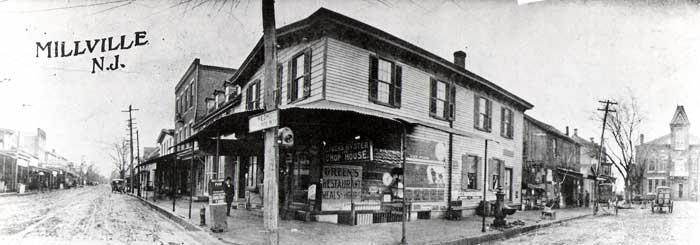 As more mills and more people came to the area, new landings and wharves were built to handle the sailing vessels that came to deliver raw materials and take finished products to market.
As more mills and more people came to the area, new landings and wharves were built to handle the sailing vessels that came to deliver raw materials and take finished products to market.
Over the decades, residential areas sprung up along this part of the Maurice River. Yella Hell was a set of ramshackle dwellings, many painted yellow, that was assembled on the eastern shore of the Maurice River at the foot of the bridge that crossed the Maurice River in Millville. A fire destroyed most of the buildings of Yella Hell in 1911.
A community of mostly "floating" cabins was established on the western shore, at a place known for a long time as "The Island." An unidentified news clipping from the 1950's bears the title "'Island' Squatters May Face Removal."
The article (datelined Millville, May 21 - no year) reported that: "Complaint has been made of persons who have established homes along a strip of land on the west side of the Maurice River, not far from the 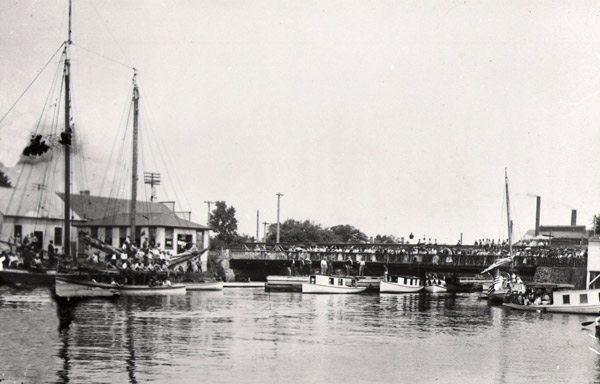 Main street bridge, known as 'The Island', and according to information, Building Inspector Raymond Zimmerman and Sanitary Inspector Albert Chiola, who have inspected them, will seek their removal."
Main street bridge, known as 'The Island', and according to information, Building Inspector Raymond Zimmerman and Sanitary Inspector Albert Chiola, who have inspected them, will seek their removal."
The article continued: "The shacks and cabins that stood on the island 15 years ago were ordered vacated by Public Safety Commissioner Lewis R. Hogan and, at the time, it was understood that "The Island" would not be used as a place of abode again. Mr. Hogan, at that time, described the occupants of the cabins as squatters."
Another unidentified news clipping, dated March 11, 1954, reported that "The last houseboat on the island in the Maurice River at the southern end of River Ave. was burned to the ground last night by firemen on their regular monthly drill. The small building had been vacated only recently. Only a few years ago, there were numerous boat houses located on the small piece of land, but fire has finally destroyed them all."
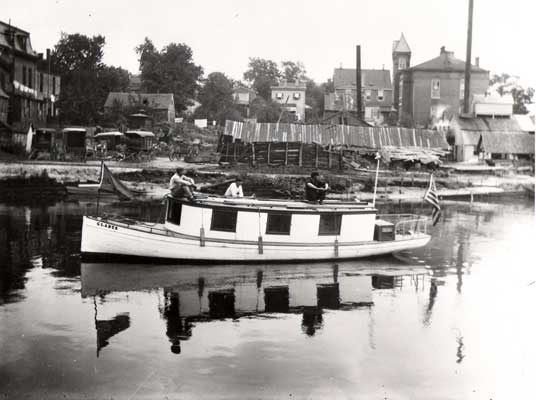 But local resident Everett Turner can show you where this spot was. "There was one place right there on the Maurice River that not many people are going to remember," Turner said.
But local resident Everett Turner can show you where this spot was. "There was one place right there on the Maurice River that not many people are going to remember," Turner said.
Right under the bridge, right there in Millville, was a little place called "The Island", Turner said. "It's still there…covered with water. They've done away with it as an island, and filled it in. It's right by the pumping station."
A good number of the island dwellers lived on the house boats, or floating cabins. "During the depression, some people had floating cabins down there - because they didn’t have to pay (property) taxes on them," Turner explained. "That was back in the 20’s and 30’s." Turner said that people continued to live on the island "all the way up into the 40’s." Turner said that the make-shift community had no real name. To the few who still remember, it was simply "The Island." (in this 1930 aerial one can make out the island)
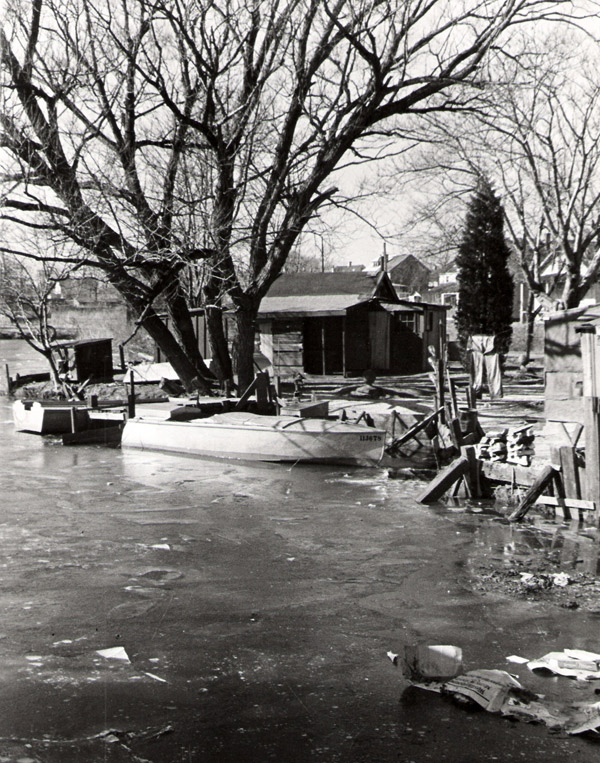
Turner still remembers the folks who lived in the floating cabins. He ticked off some of the names: "Chris Ranson, Alec MacBeth, Billy McBurg, Allie Madden, and his son Charlie. (They had to have separate places.) And Malen Wingersaul." Turner paused and added, "And then there was Harry and Nimble Penn…"
At the Millville Historical Society there are photos of Nimble Penn. There is also a large painting of "The Island", painted by Matilda Young Phifer. (Date unknown.) One of the individuals in the painting has been identified as Nimble Penn (photo). A handwritten passage that accompanies the painting identifies the scene as "The Island." The note relates that the island is "in reality, a peninsula near the pumping station." The author (perhaps the artist) pinpoints the location as "one block south of Main Street Bridge on the west side of the Maurice River in front of the present High Rise West."
Others remember the area near Bridge Reach because of the activities that took place in the vicinity. Port Norris resident Lou Capaldi recalls that oystermen Boyd, Norman, George and Richard Robbins, also of Port Norris, owned three schooners. "When they finished planting oysters," Capaldi related, "they would keep their one schooner, the Mary Caroline, down here (in Port Norris) because they needed it for harvesting (the oysters)." Capaldi remembered that the Robbins men "would run" the two other schooners "all the way to Millville." Capaldi said that they would bring the boats up almost as far as the bridge, to where the Silverton boatyard is. "There is a little cove, and they would keep them there all summer," he said. 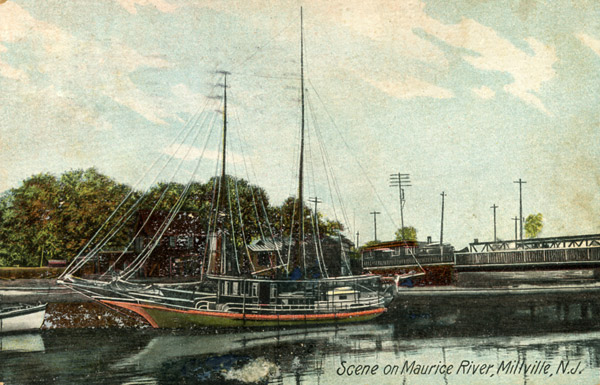
And Frank Murphine remembers when barges would come up the Maurice River loaded with logs for Bailey's Basket Factory. "The loading platform was where Buck Park is now," Murphine said. "They had a big tripod there. They would take the logs to the Bailey Basket Factory.” Murphine said that the time frame for that activity was in the 1940's and early 50's. "Bailey's was still there when I started working for a fuel company. That must have been more than 40 years ago," he said.
 click to navigate the map "up".
click to navigate the map "up". click to navigate the map "down".
click to navigate the map "down". click to navigate the map "left".
click to navigate the map "left". click to navigate the map "right".
click to navigate the map "right". click to "zoom in" for a closer look.
click to "zoom in" for a closer look. click to "zoom out" to back away from the map.
click to "zoom out" to back away from the map. click to get back to the "default" map setting.
click to get back to the "default" map setting. click to learn more about that reach.
click to learn more about that reach.



